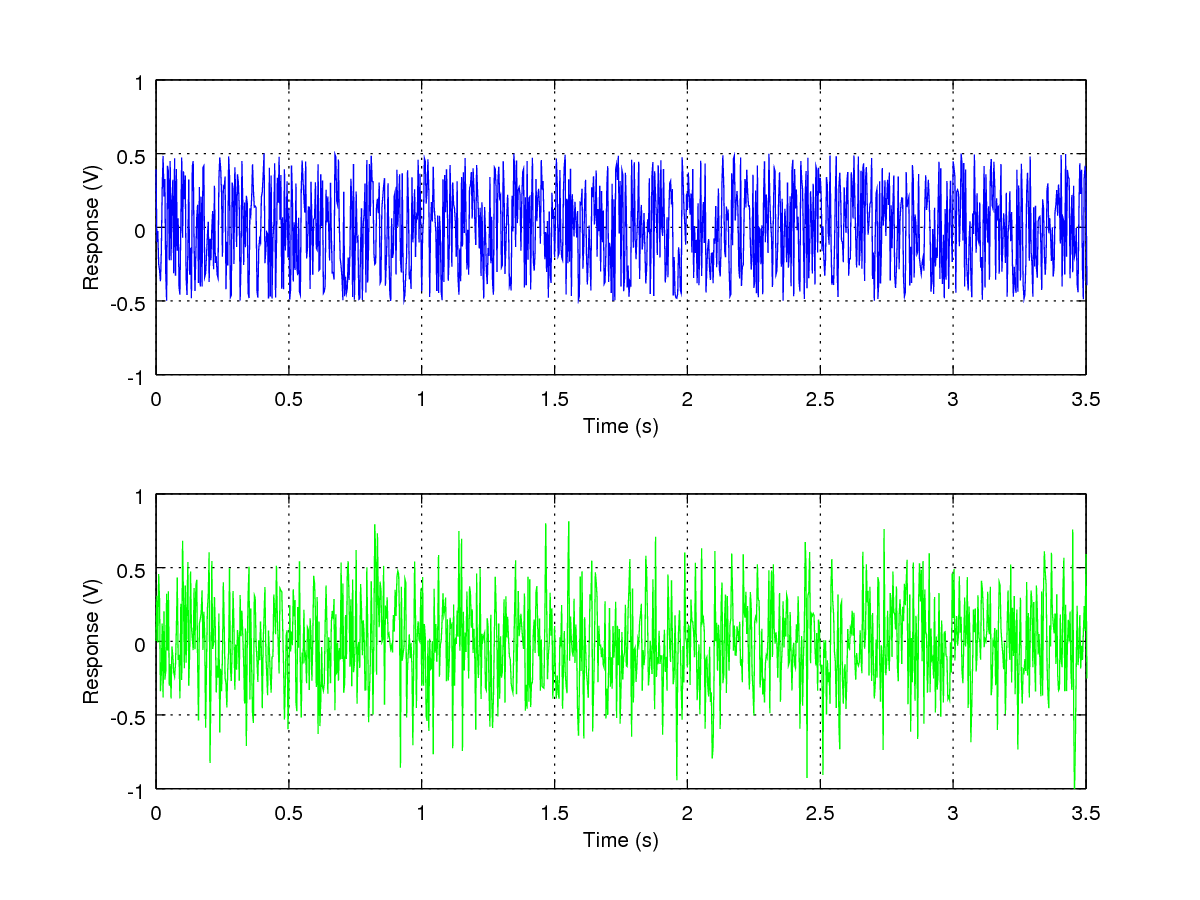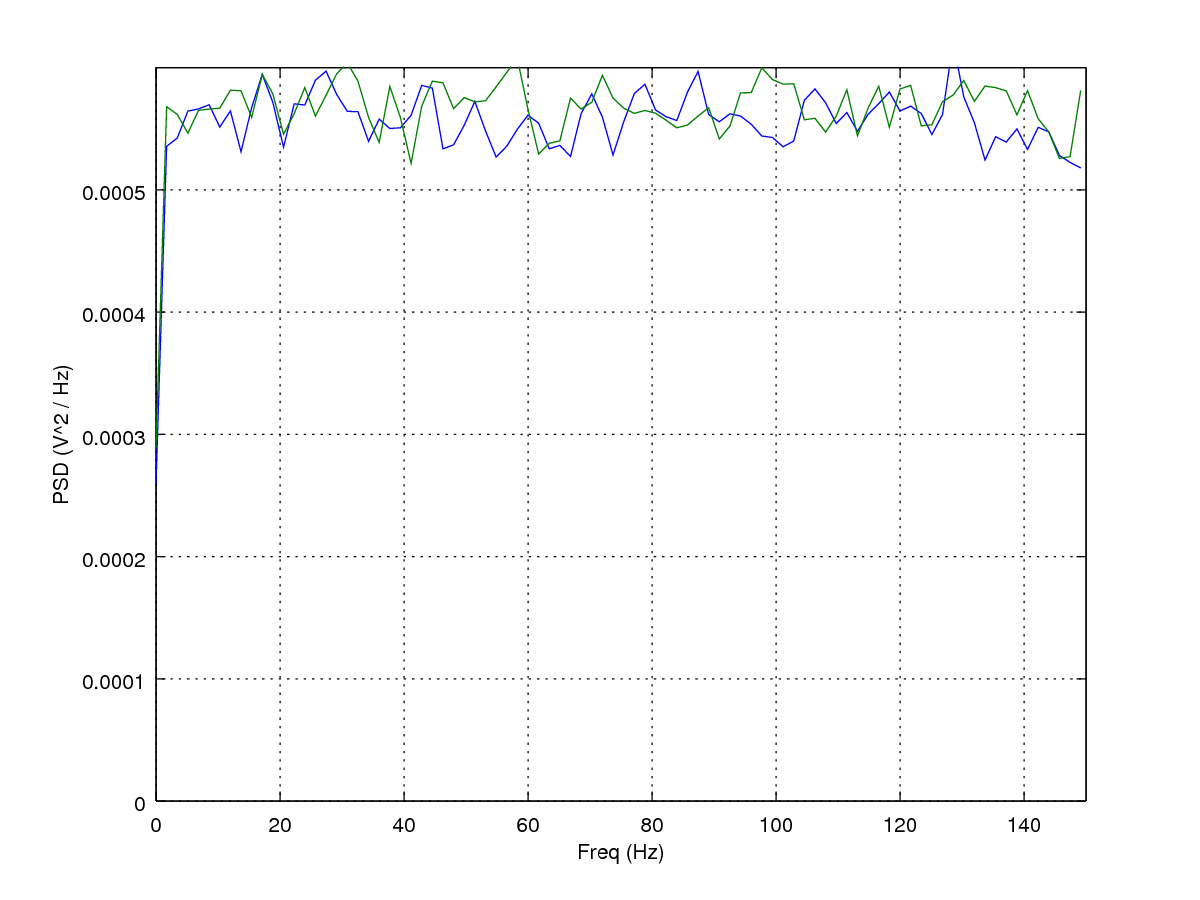 
|
In Figure 26, we show two different random sequences. We will discuss how they were generated later, for now let's just take a look. The two different sequences are both clearly random sequences, but they look a little different. Due to the random nature of the data, it may a little hard to quantify, but we know intutitively from just looking at them they there are not the same.
In the previous section we discussed power spectral density, so let's see what that can tell us about the two sequences. On the right in Figure 26, we see that the two sequences are more or less the same in PSD. They both look fairly white (i.e. have the same PSD at each frequency). This brings up an important distinction between Fourier spectrums and Power spectral density. If we have a Fourier spectrum (amplitude/phase, or real/imaginary), we can invert it to get one and only one time series. But, power spectral density has no phase information. There are an infinite number of possible random sequences that could lead to the same PSD.
So we need some other metric to quantify the difference between the two sequences. The most basic tool we can use here is a simple histogram. Figure 27 shows the histogram of the two sequences. Now the difference is obvious. The first sequence has amplitudes uniformly distributed between -0.5 and 0.5. This was generated with matlab's rand() function. The second sequence has a normal (Gaussian) distribution of amplitude, with mean 0 and standard deviation ~0.3.
 
|
